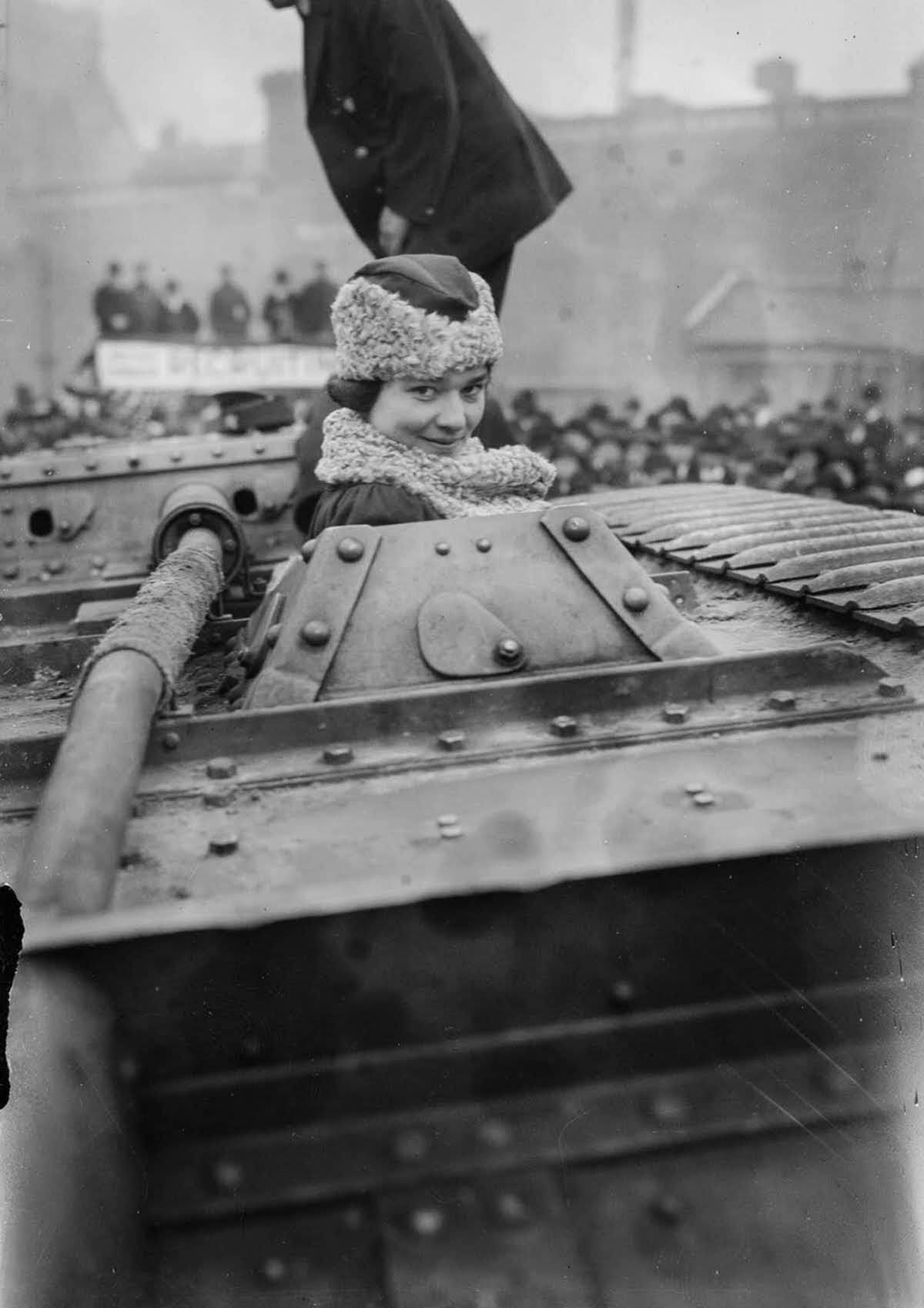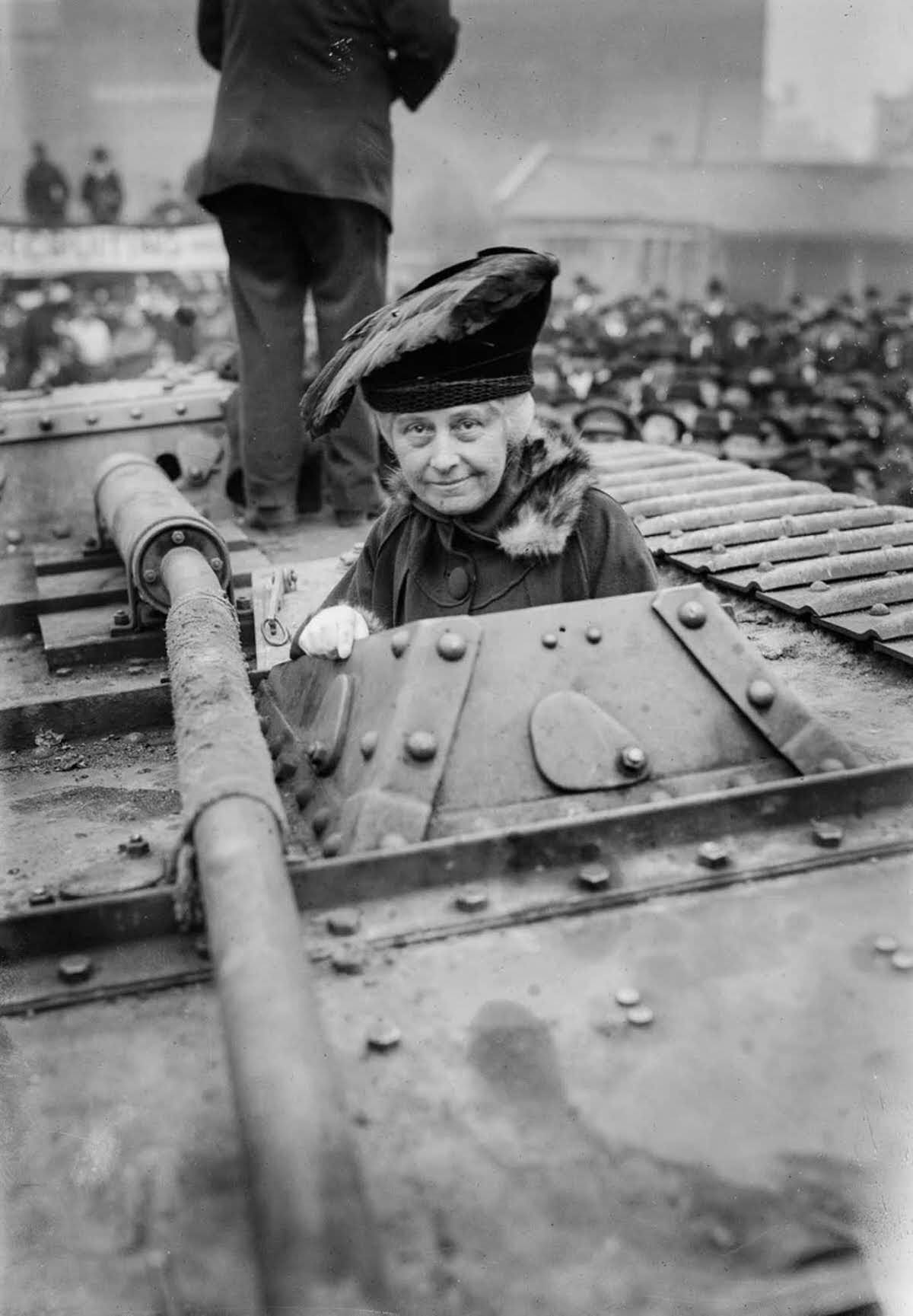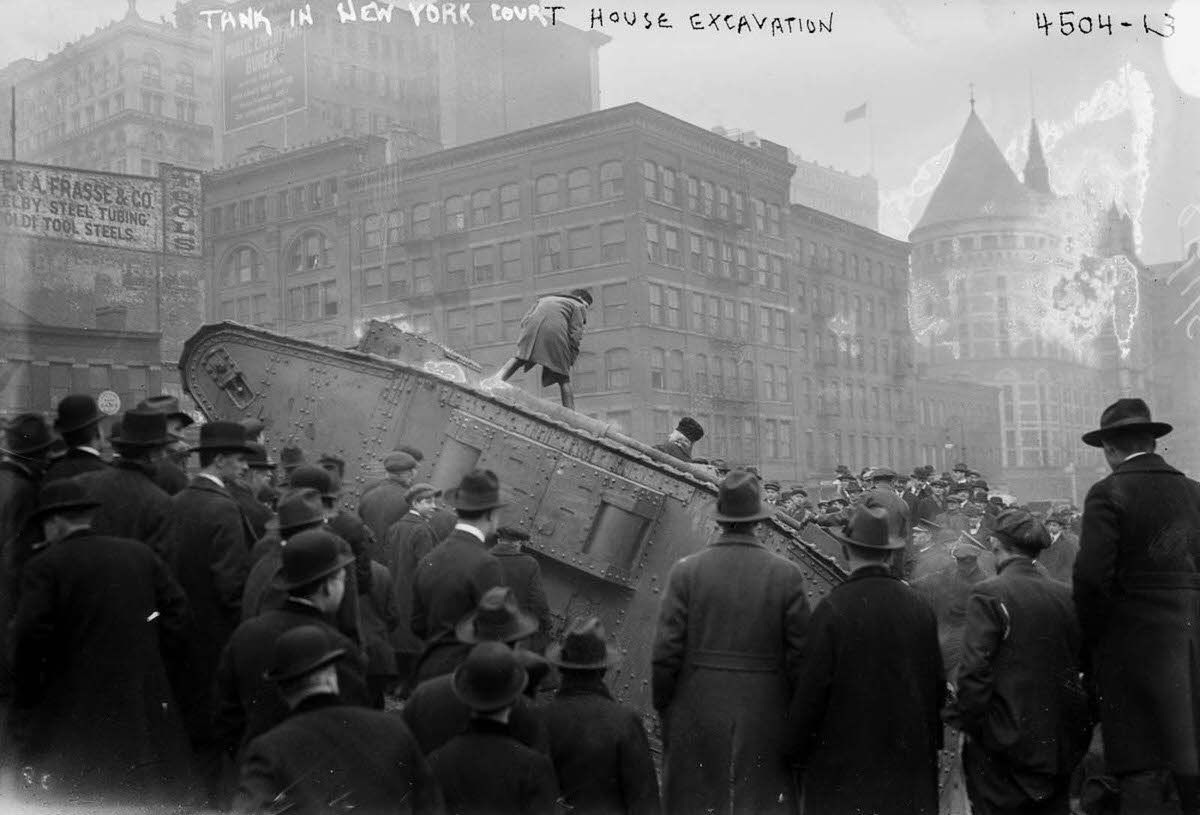The federal government invented Liberty Day to help finance the massive effort of entering World War I. The government intended that one-third of the war’s funding would be raised through progressive taxation, while the other two-thirds would come from the sale of “Liberty Bonds.”
New York City held Liberty Day on October 25, 1917, and there was a massive publicity campaign to convince the public to buy the bonds. The government organized an impressive display: a three-engine Caproni bomber flew low beneath the skyscrapers, a parade of military motorcycles traveled along Fifth Avenue, and an American flag was draped on the captured German submarine inside Central Park.
Some signs read, “Submarines take lives; liberty bonds save them.” The German submarine SM UC-5 was credited with 29 ship sinkings to its name. Six days after its launching on June 13, 1915, the ship was commissioned into the German Imperial Navy. Ordered in November 1914, it was delivered on June 13.
German sailors struggled to create a strong navy during World War I due to finances, but Germany managed to build hundreds of cheap submarines that cut off the United Kingdom and its supplies from the rest of the world. A UC-5 that ran aground on patrol in April 1916 was towed up and exhibited to the public in London at Temple Pier on the Thames River and in New York. While surfaced, the submarine could operate at a depth of 160 feet and had a maximum speed of 7.47 mph. There were fourteen crew members on board the ship, built by AG Vulcan Stettin.
By the end of the war, twenty million people had bought bonds. Even though there were only 24 million households at the time, that is pretty impressive. The amount raised exceeded $17 billion. Additionally, taxes collected totaled $8.8 billion. Taxes accounted for one-third, and bonds made up almost two-thirds.
There is no doubt that the emotional advertising campaign led to a strong desire to participate in the war effort by way of volunteering.














